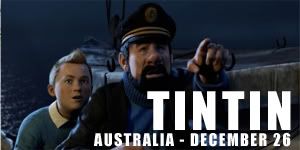I can't decide wether or not the plot and setting of the graphic novel is one elaborate contrived gimmick or a stroke of imaginative and conceptual genius. Maybe its both.
 But basically this eight-book volume, collected in a giant hardcover book, imagines the Marvel Universe as it would have been if it was set in Europe in the year 1602. All the Marvel characters from the "Silver Age of Comicbooks" are present and accounted for. Sir Nicholas Fury is the head of the ailing Queen Elisabeth I's Intelligence Agency and magician Doctor Stephen Strange is her physician. Bizarre thunderstorms have been appearing around the world and is threatening to tear the world apart and the good doctor is not convinced that this is entirely a natural phenomenom. Meanwhile the Queen awaits the coming of Virginia Dare, the first English colonist born on the American Colonies (in fact, the colony of Roanoke which in the real world has had an interesting history if I'm not mistaken). She is accompanied by her Native American protector who takes no nonsense from anyone. But Virginia has a strange powers herself that are both usefull and very dangerous...
But basically this eight-book volume, collected in a giant hardcover book, imagines the Marvel Universe as it would have been if it was set in Europe in the year 1602. All the Marvel characters from the "Silver Age of Comicbooks" are present and accounted for. Sir Nicholas Fury is the head of the ailing Queen Elisabeth I's Intelligence Agency and magician Doctor Stephen Strange is her physician. Bizarre thunderstorms have been appearing around the world and is threatening to tear the world apart and the good doctor is not convinced that this is entirely a natural phenomenom. Meanwhile the Queen awaits the coming of Virginia Dare, the first English colonist born on the American Colonies (in fact, the colony of Roanoke which in the real world has had an interesting history if I'm not mistaken). She is accompanied by her Native American protector who takes no nonsense from anyone. But Virginia has a strange powers herself that are both usefull and very dangerous...
To summerize the plot further would spoil too much (and would take too much time), but I should say that somehow Gaiman manages to add 17th century versions of several Marvel superheroes and villains, including people who live in a school for gifted young lads, a blind minstril named Matthew and a young fellow named Parquagh who is consistantly almost getting bitten by strange spiders. All this is mixed into Court Intrigue as James of Scotland, pictured as a self-righteous religious maniac, lusts after the throne of Elizabeth I. And there is even a Templar artifact thrown in for good measure (although don't expect it to be anything like The Da Vinci Code)
Speaking of which one of the flaws with the story is that its theologically dodgy at best. The Marvel universe has always been slightly incompatible with a totally Christian world-view (especially considering that there some guy named Thor always hanging around
 ) but 1602 does not shy away from this like most stories would. All of the superheroes are depicted as Christians, both Catholic and Protestant (except maybe Stephen Strange) but find themselves constantly in a spiritual battle. The "witchbreed" (Mutants in modern Marvel comics) are seen praying in one scene together when in another the Spanish Inquisition (didn't expect them, did you?) tries to burn a witchbreed who resembles an angel. The Inquisition is featured a lot in this book and as I said King James of Scotland is not the saint he believes himself to be. 1602 however does not condemn Christianity but rather religious fanatacism. Also, as mentioned, there are polytheistic elements as well.
) but 1602 does not shy away from this like most stories would. All of the superheroes are depicted as Christians, both Catholic and Protestant (except maybe Stephen Strange) but find themselves constantly in a spiritual battle. The "witchbreed" (Mutants in modern Marvel comics) are seen praying in one scene together when in another the Spanish Inquisition (didn't expect them, did you?) tries to burn a witchbreed who resembles an angel. The Inquisition is featured a lot in this book and as I said King James of Scotland is not the saint he believes himself to be. 1602 however does not condemn Christianity but rather religious fanatacism. Also, as mentioned, there are polytheistic elements as well.
If there is another flaw but I can't talk of it because it would spoil the plot. But the biggest problem I found is that I was unsatisfied when the story finished because (egads) I didn't want it to end. I would have preferred it to go on. Actually, although Gaiman and Marvel never said they were going to continue this series, they certainly WROTE it as if they are going to. Maybe some other time, perhaps.
Not everyone would like this graphic novel but I heartily recommend it.
Edit: Looking back at how much I wrote, I have to say I failed at keeping it short as I intended too. Doh.

Edit: I would also like to add that the dialogue is some of the best I've ever encountered in a graphic novel. It is in fact very well written. I am truly impressed by that.
Edit: It is also more "adult themed" than the run-of-the-mill Marvel comic although nothing is explicit.


 :)
:)